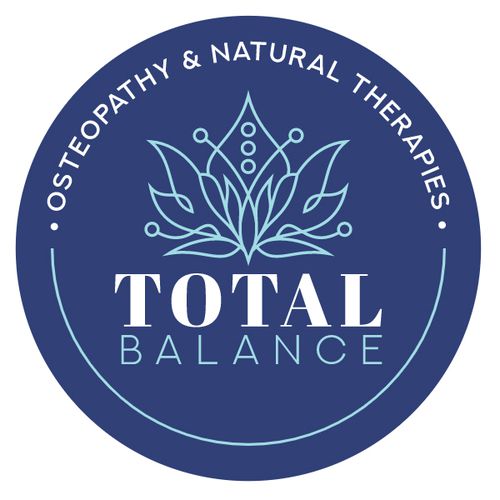
Osteopathy is a natural treatment utilised to treat a range of ailments and conditions, including osteoporosis. Natural therapies and treatments are increasingly respected for their effectiveness, lack of significant side effects and non-invasive nature.
What is Osteoporosis?
The condition of osteoporosis is characterized by a loss of bone mineral density, leading to thin bones and an increased risk of fractures. Osteoporosis affects many people, especially older women, who are most at risk. It causes the skeleton to become weak because bone mass decreases over time.
The loss of bone density makes bones less resistant to breaking under pressure or force. Once one part of the bone breaks down, the rest follows suit, leaving the patient more susceptible to hip fractures. If their osteoporosis is untreated for longer periods of time, they are more likely to suffer several broken bones that will limit their range of motion.
Osteoporosis is caused by several factors, such as lack of weight-bearing exercise, decreased blood flow, and the inadequate intake of calcium. Excessive alcohol consumption is also believed to be another major culprit. Unfortunately, this condition is difficult to detect and is usually only evident in a bone scan. Sufferers often discover they have the condition after fracturing a bone which fails to heal as quickly as expected.
Postmenopausal women are at greater risk of osteoporosis as the hormonal changes lead to deficiencies in calcium levels in their bodies. Calcium is crucial to ensure bone strength and hardness, and it is incorporated into the bones after being absorbed into the bloodstream. Modern medicine has a range of drug treatments, including hormone replacement therapy (HRT) – while dietary modifications to enhance calcium intake, and regular exercise are other options.
Osteopathy is a gentle form of manual therapy that has been found to be an effective osteopathic treatment. It works by improving how the body responds to nervous system stimulation.
What is Osteopathy?
Osteopathy is a non-invasive holistic treatment for the body that focuses on removing musculoskeletal impediments, so the body and all its associated systems function harmoniously. This form of manipulative therapy utilises techniques similar to bodywork to stretch and manipulate the muscles, joints and skeleton, to ensure all these elements are functioning at their optimum. Much of the discipline is focused on studying how each part of the body interacts with the rest. Osteopaths treat a variety of disorders including back and neck pain, joint pain, repetitive strain injuries, sports injuries as well as osteoporosis. The techniques used in an osteopathic manipulation treatment include, but are not limited to:
- Massage and manipulation
- Stretching
- Joint mobilisation
- Resistance exercises
- Deep pressure handwork
Osteopathic Techniques for Osteoporosis Management
While conventional medical treatments play a crucial role in managing osteoporosis, osteopathic techniques can offer additional support in improving bone health and reducing the risk of fractures.
Osteopaths employ a range of techniques to address osteoporosis effectively. One such technique is targeted manipulative therapy, which involves gentle manual adjustments to realign and mobilise the musculoskeletal system. By targeting specific areas of the body, osteopaths can alleviate tension, improve joint mobility and enhance overall bone health.
Additionally, osteopaths may prescribe specialised exercises and stretches tailored to the individual's condition and needs. These exercises focus on strengthening the muscles supporting the bones, improving posture and increasing flexibility. By engaging in regular physical activity under the guidance of an osteopath, individuals with osteoporosis can enhance their bone density and reduce the risk of fractures.
Osteopathy also emphasises the importance of a holistic approach to health. Osteopaths may provide guidance on nutrition and lifestyle modifications that support bone health. This may include recommending a diet rich in calcium and vitamin D, as well as suggesting lifestyle adjustments to minimise factors that contribute to bone loss, such as smoking or excessive alcohol consumption.
Osteopathy as a Complementary Treatment for Osteoporosis
Osteopaths can be consulted for the treatment of osteoporosis, which can be especially beneficial for patients recovering from surgery or recuperating from a fracture. Any treatment should be undertaken by a qualified practitioner, who is fully knowledgeable of the condition. Any manipulation of the spine could have potentially critical consequences, hence consulting an experienced osteopath is essential.
One of the primary benefits of incorporating osteopathy into osteoporosis treatment is its ability to address the musculoskeletal imbalances that often accompany the condition. Osteopaths are skilled at evaluating the body as a whole and identifying areas of tension, misalignment or restricted mobility. By using a variety of hands-on techniques, such as soft tissue manipulation and joint mobilisation, osteopaths can help restore balance and functionality to the musculoskeletal system, relieving strain on weakened bones and reducing the risk of fractures.
Osteopathy aims to affect how blood flows, how organs function, and also how cells behave. An osteopath will look at how the bone tissue relates to other soft tissues in the body in an attempt to make the patient healthier on every level of their being. The goal of an osteopathic treatment plan is not only to cure the symptoms but also look into how that ailment originated in the first place, then rectifying that problem by removing any interference that may be impeding the healing processes.
In addition to manual techniques, osteopaths may provide guidance on lifestyle modifications that can support the management of osteoporosis. This may include recommendations on ergonomic adjustments, fall prevention strategies and exercises to improve balance and stability.
When used in conjunction with conventional medical treatments, osteopathy can offer a comprehensive and integrative approach to managing osteoporosis. By addressing musculoskeletal imbalances, promoting circulation and providing holistic guidance, osteopaths can help individuals with osteoporosis achieve better overall outcomes and enjoy an improved quality of life.
Osteopathy for Pain Management in Osteoporosis
Pain is a common symptom experienced by individuals with osteoporosis, often arising from fractures or musculoskeletal imbalances resulting from the condition. While pain medications can provide relief, osteopathy offers alternative approaches to pain management that target the underlying causes and contribute to long-term wellbeing.
Osteopathic techniques can effectively alleviate pain associated with osteoporosis by addressing musculoskeletal imbalances. By using gentle manual manipulation, osteopaths can restore proper alignment, release tension and improve joint mobility. This not only relieves pain directly but also helps to prevent further strain on weakened bones, reducing the risk of additional fractures.
Soft tissue techniques, such as myofascial release and trigger point therapy, are also employed by osteopaths to relieve pain in individuals with osteoporosis. These techniques focus on releasing tension and restoring flexibility in the muscles and connective tissues surrounding the affected areas. By reducing muscle spasms and improving tissue health, osteopaths can help alleviate pain and promote better overall function.
Furthermore, osteopaths may recommend specific exercises and stretches tailored to the individual's condition to address pain and improve mobility. These exercises aim to strengthen supporting muscles, increase flexibility and promote better posture, all of which contribute to reducing pain and enhancing overall comfort.
Osteopathy and Postural Corrections in Osteoporosis
Posture plays a crucial role in maintaining bone health and reducing the risk of fractures in individuals with osteoporosis. Osteopaths are trained to assess and address postural imbalances, offering valuable guidance and interventions to improve posture and overall bone health.
Osteopaths evaluate the body as a whole to identify postural imbalances that can contribute to increased strain on the bones. Common postural issues in individuals with osteoporosis include forward head posture, rounded shoulders and excessive spinal curvature. By using a variety of hands-on techniques, such as myofascial release and gentle spinal manipulation, osteopaths can help restore proper alignment, alleviate strain,and improve posture.
Additionally, osteopaths may provide specific exercises and stretches that target postural imbalances. These exercises aim to strengthen the muscles responsible for maintaining correct posture, improve core stability, and promote spinal alignment. By engaging in regular postural exercises, individuals with osteoporosis can reduce the risk of fractures and enhance overall bone health.
Furthermore, osteopaths may offer guidance on ergonomics and lifestyle modifications to support optimal posture throughout daily activities. This may include recommendations for proper sitting and standing positions, adjustments to workstations and techniques to maintain good posture while performing everyday tasks.
By addressing postural imbalances, osteopaths play a vital role in preventing further bone loss and reducing the risk of fractures in individuals with osteoporosis. Through manual techniques, targeted exercises and postural guidance, osteopathy can significantly contribute to improving posture, enhancing bone health and promoting overall wellbeing.
Latest Clinical Trials and Studies on Osteopathy for Osteoporosis
There has been growing interest in combining complementary therapies, such as osteopathy, to conventional treatments for osteoporosis. Here, below, we will summarise the latest clinical trials and scientific studies.
Effect of Osteopathic Manipulative Therapy (OMT) on Bone Mineral Density: A randomised controlled trial published in the Journal of Osteoporosis in 2022 examined the impact of OMT on bone mineral density (BMD) in postmenopausal women with osteoporosis. The study included 120 participants who were assigned to either an OMT group or a control group. The OMT group received osteopathic manipulative therapy sessions twice a week for six months. Results showed a significant increase in lumbar spine BMD in the OMT group compared to the control group. Although further research is needed, these findings suggest that OMT may have a positive effect on BMD in osteoporotic individuals.
Osteopathic Treatment and Quality of Life: A recent study that was recently published in Complementary Therapies in Medicine investigated the impact of osteopathic treatment on the quality of life of individuals with osteoporosis. The trial involved 80 participants who received either standard medical care alone or standard care combined with osteopathic treatment for six months. The group receiving osteopathic treatment reported significant improvements in pain levels, physical functioning and overall quality of life compared to the standard care group. These results indicate that osteopathy may offer additional benefits in enhancing the wellbeing and daily functioning of osteoporosis patients.
Osteopathy and Fall Prevention: A systematic review published in the Journal of Aging and Physical Activity in 2021 examined the role of osteopathic interventions in preventing falls among older adults with osteoporosis. The review analysed several studies and found consistent evidence supporting the effectiveness of osteopathy in reducing fall risk by improving balance, muscle strength and proprioception. Osteopathic techniques, such as spinal manipulation and soft tissue mobilisation, were shown to enhance musculoskeletal function, leading to improved postural stability and reduced fall incidence.
Osteopathic Approach to Fracture Healing: An article published in the Journal of Bodywork and Movement Therapies explored the potential benefits of osteopathic treatment in promoting fracture healing in osteoporotic patients. The study reviewed current literature and suggested that osteopathic techniques, including gentle mobilisation and indirect techniques, may aid in reducing pain, accelerating healing and improving functional outcomes in fractures associated with osteoporosis. However, further clinical trials are needed to validate these findings and establish specific protocols.
To get the most out of osteopathy for osteoporosis, see to it that your osteopath is qualified and registered with a reputable national association. This will ensure they have the necessary qualifications and are in possession of all the relevant indemnity and insurance cover.
Find out about other effective natural osteoporosis treatments.
Originally published on Jun 16, 2010








